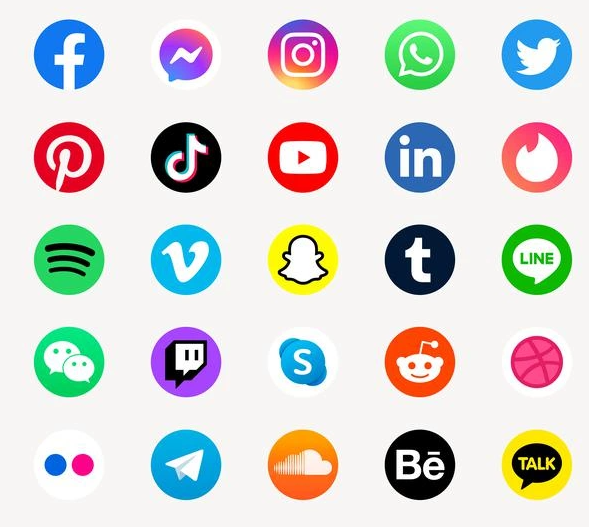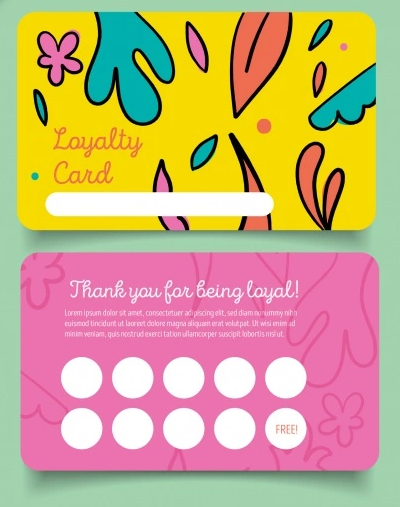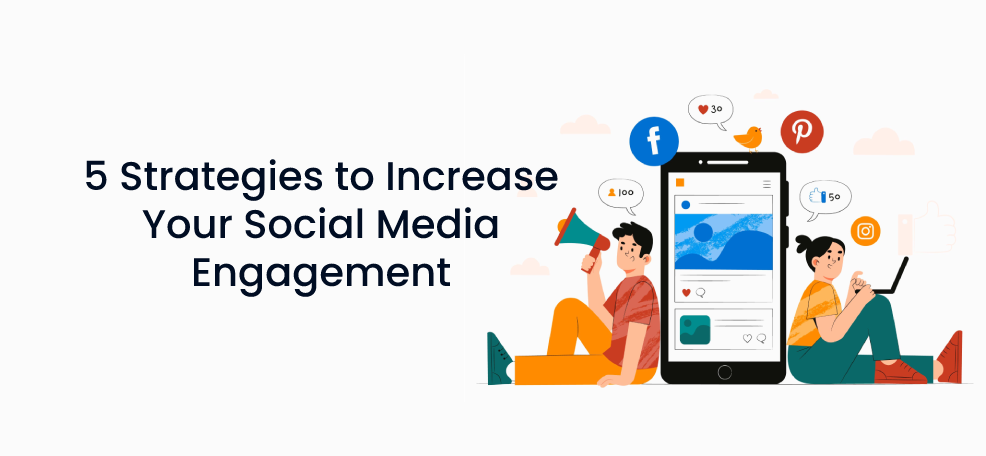Social media has become the center around which brand management is run. A solid social media presence is essential to building your brand. It’s not just about being present; your audience wants a genuine connection. An engaging brand means you’re impacting your audience.
There are numerous benefits to spending time and money on making your brand relevant to your audience. This article focuses on how you can increase your audience’s engagement with a few simple strategies.
Why Should You Create a Social Media Engagement Strategy?
Social media engagement is your audience’s interaction with your social media posts. You can measure this in likes, shares, and comments. You can also look at mentions, click-throughs, and how many new people start to follow your profile. The more your audience interacts with your posts, the more engaged they are. Most social media platforms have insights to measure engagement.

You can use various strategies to build engagement with your audience and create these genuine connections. Many brands tend to want to increase the size of their audience and, by doing so, lose the engagement and connection that’s so important. Consider defining a social media workflow to maintain the initial quality and consistency of building your brand on social media.
Engagement allows you to build a relationship with your customers. You have the opportunity to get to know your customer better. It helps them feel like they’re interacting with a person and not a massive corporation, making you more approachable.
Engagement allows you to build loyalty from your customers. Brand loyalty, in turn, creates brand trust, which means customers who return to you and recommend to others. Active social media profiles will also help increase your sales as more people become aware of what you offer and learn to trust the brand.
Develop an Authentic Brand Voice
Social media users are inundated with business posts. To truly engage with your audience, you should stand out while still being true to your brand. It takes users less than a second to form opinions on what they see on their social media.
To develop your brand voice, consider your audience. These are the people at whom your posts are aimed. You should also take into consideration the media you’re using. Each platform has different lengths and types of posts.

Your brand voice incorporates your values and unique perspective – it’s the personality of the business. Your posts and interaction with your audience should reflect not only who you are as a business but also who you’re engaging with. If your target audience is millennials, you’ll have a different presentation than if you’re targeting Gen Z. Similarly, the product or service you offer influences how you communicate with your audience.
You have to know your audience when developing your voice. You should look into how your audience interacts with each other with online posts. Ask your audience to describe your brand and what interactions or events influenced this view. This will give you a good indication of what your voice should be.
Part of developing an authentic voice is to create a message architecture. This will ensure that your posts are always aligned with your core values and message. You can prioritize your goals by using specific phrases, statements, and terms to be used when communicating online.
Build a Community
Build a community on social media instead of simply having followers. A community is a social unit where people feel like they belong with similar goals, interests, and attitudes. You can build a community by welcoming friends and customers to your pages.
A great way of building and strengthening a community is by hosting live streams where you’re able to connect with your followers in real-time. You can use a live stream to host a quick Q and A, announce a new product or service, or gather customer feedback.
It’s also important to respond to your customers’ posts to help them feel engaged. Make your posts personal by using the handle or name of the person to whom you’re responding. Help your audience feel important instead of simply making posts about your brand.
You should use relevant material, which will often include memes, gifs, videos, songs, and more. This way, you’ll be more relatable, which means people will share your posts. In turn, this makes your brand more likable.
If you are just starting out with your online business, building a community from scratch can be tough.
You can either prepare to wait till you see the engagement rate grow over time or consider acquiring social media accounts with a legit community from reliable sources.
However, this doesn’t mean you buy fake followers as this practice is always harmful and pointless in the long-run.
Run Giveaways and Contests
Consider offering your followers something in return for sharing your post or getting more people to follow your pages. Items with your company’s design often make excellent items for giveaways.
For instance, branded embroidery on caps and shirts is popular and serves as ongoing marketing. Similarly, you can offer discount codes or other freebies. Many brands choose to partner with different products to make contests more enticing.
You can also make use of influencers to help reach more people. An influencer already holds an audience’s trust and can easily convince others to like your page. You can also measure and report on the performance of influencer activity with Influencer Analytics. It’ll help you to Giveaways and contests make for an excellent way to get people who usually won’t like or share to engage in your posts.
As an example, consider this giveaway from PuraVida foods. They frequently organize giveaways as a way of growing their audience. The company makes the giveaway rules very clear thus increasing their chances of success.
Whenever you do a contest or giveaway, ensure that you keep it as fair as possible. There are many tools available to draw names at random. Always keep to drawing dates and make sure the winner is informed.
Post Consistently
Social media is a fast-paced place. It’s easy to become irrelevant and forgotten. All your channels should stay active through consistent posting. Your audience wants to know you’re relevant and what’s happening with your brand.
Frequent posts will keep your followers while also attracting more. Due to the fast-paced nature of social media platforms, your posts will likely disappear in the clutter within a day or two. Frequent posts mean that you post multiple times a day, usually, three times spread across optimal times. If there’s many, you can also plan and manage all social media in one place to save time, energy, and avoid last-minute tasks.
Find out when your target audience is most active on the platform and use these times to make posts. Ensure that you plan your posts ahead of time. There is various effective management software you can use to help you plan and keep track of what and when you will post updates.
Posts don’t always have to be brand-related. You can post industry news or interact with users who use hashtags loosely related to you. Ensure that you keep your posts interesting to make it easy for followers to engage in the posts.
If you’re inactive, users may see you as a useless account to follow. The more active your account is, the more likely it will pop up in your audience’s feed. Search engine optimization also includes activity in its ranking system.
Reward Loyalty
Ultimately, you want your followers to spend money on your product or service. However, rewarding loyalty shouldn’t be about just rewarding people who spend more money.
You can reward loyalty on social media by allowing your followers to sign up for loyalty programs using their social media pages. It makes the process quick and easy for the customer while enabling them to link their social media activity to your loyalty program. For instance, offer points toward a discount if the customer shares or likes a post.
If you incentivize interaction on social media, you can get customers to create even more interaction with new users. You can even bring customers to create original content about your brand on your behalf.

Offer experiential rewards that people are more likely to post and share on social media. This can be as simple as having a giveaway for pictures, including your product, or hosting a customer at an event.
The more the customer posts and shares, the more they’re rewarded. Your customers are more likely to share experiential rewards on their social media, creating more awareness among other users.
Rewarding loyalty on social media can also take the form of gamification. Have small games which encourage customers to interact with the post and pair it with a giveaway. These posts can be puzzles, spot-the-difference, or similar types of games. Doing so increases customer lifetime value all the more.
Final Thoughts
People no longer want to see big corporations punting their products when they scroll through social media. Every post has less than a second to create an impact on the customer’s mind. Your brand should ensure that it has an authentic brand voice that stays true to the core values and personality of the business while reaching your target audience. Consider the platform you’re posting on since each platform needs various types of posts of different lengths.
Allow your followers to become part of a community with the same opinions and interests. A community allows your customers to feel like they belong and let them engage more with your brand, creating loyalty and trust.
Giveaways and contests are great ways to get followers to interact with posts, even if they usually wouldn’t. You should also ensure that your posts are consistent, preferably multiple times a day. Find out when your audience is most active on the platform and use these times to make meaningful posts.
If you reward followers loyal to your social media, you can increase your audience while building even more trust in the brand. Ultimately, brand trust and loyalty increase sales.
There are multiple tools you can use to track engagement. As you track which posts are more popular and which aren’t, you can take notes and change your approach accordingly.




